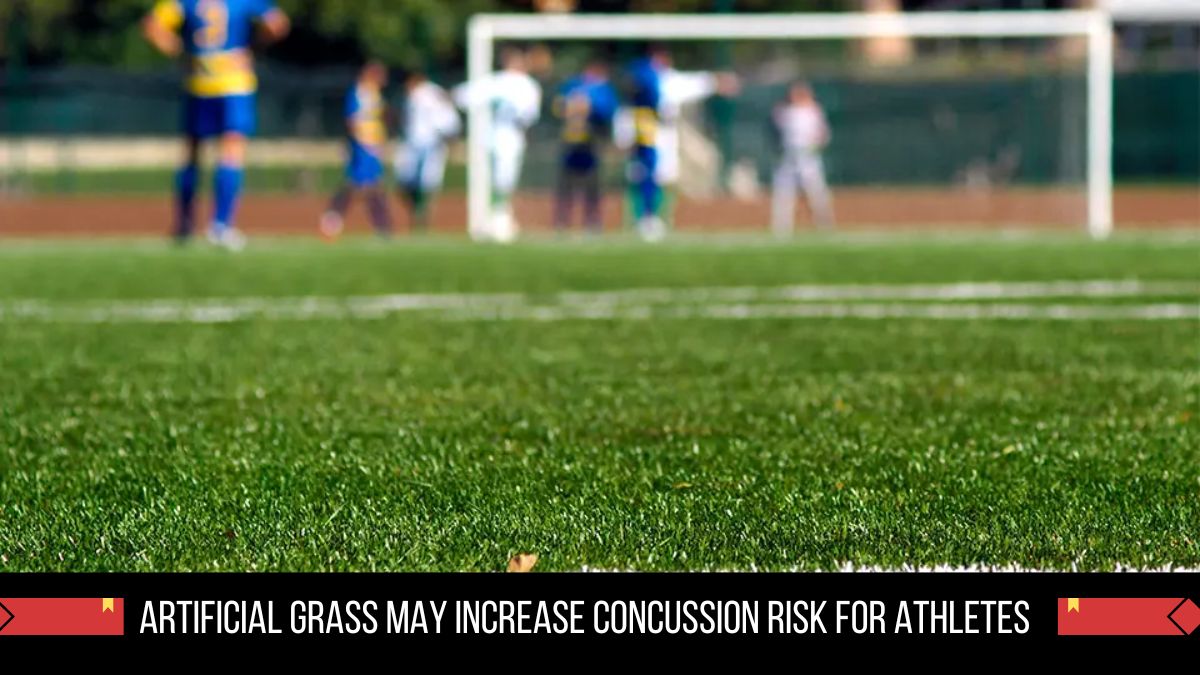According to an examination of several outdoor playing surfaces, falls on artificial turf may represent a larger risk of concussion than falls on natural grass.
Athletes who play on synthetic grass surfaces may be more susceptible to concussion than those who play on natural grass.
Around 20% of concussions among high school athletes in the United States are caused by the person striking their head on the playing surface.
Artificial turf is growing increasingly popular across the country: there are already over 16,000 synthetic grass fields in the United States, with up to 1500 new ones being developed each year.
Several studies have found that ankle and knee injuries are more likely on harder synthetic playing grounds than on grass, among both professional and amateur athletes. Nonetheless, Ian Chun of the University of Hawaii says there isn’t “a lot of data on differing rates of concussions related to field hardness.”
Chun conducted a series of experiments in which a 20-kilogram mannequin was dumped onto 10 natural grass playing fields and 9 artificial turf surfaces. Chun attached accelerometers to the mannequin’s right ear, top of the head, and forehead before equipping it with an American football helmet. He then dropped it from a height of 170 centimeters – intended to represent the height of a teen athlete – onto a table, measuring the impact as the mannequin landed on its left side, front, or back.
Chun discovered that impact deceleration – a measure of how abruptly anything in motion is brought to a halt – was much higher on synthetic playing fields in all three falling positions after 1710 total drops. Deceleration measured in g-forces was up to 23 g higher on artificial grass compared to natural surfaces, depending on drop position. Previous studies have shown that a hit of 40 g or more increases the likelihood of concussion, however, some people can survive a concussion at lower levels.
“Our research indicates that synthetic fields provide a more difficult playing surface.” This equates to a possible increased risk of concussion owing to contact with playing surfaces,” explains Chun, who will discuss his findings on October 8 at the American Academy of Pediatrics Conference and Exhibition in California.
A concussion is understood to be caused by a sudden deceleration of the brain within the skull. “I believe that further research documenting the real incidence of concussions in different playing fields and environments would be an intriguing follow-up study that would confirm the link between harsher playing surfaces and concussion risks,” Chun adds.
According to Kristen Dams-O’Connor of the Icahn School of Medicine at Mount Sinai in New York, these findings indicate a viable approach to lower injury risk. “We’re at this really intriguing crossroads now where data has developed indicating there is a danger to brain health in contact sports even in the absence of a concussion,” she adds.
Dams-O’Connor would like to see more work done to corroborate the findings and undertake comparable research on different playing surfaces. “We should think about every possible way to make sports safer,” she argues.
